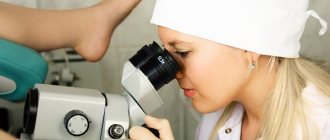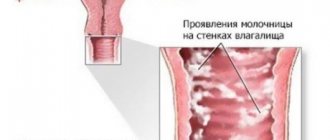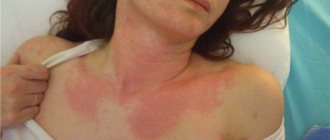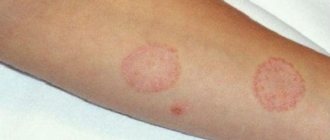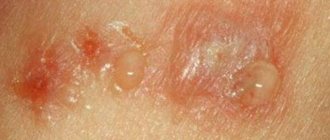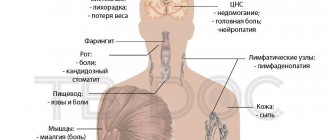What is diathesis
Every experienced and young parent with small children faces diathesis. Diathesis translated from Greek means predisposition and should not be regarded as a disease.
It can rather be attributed to constitutional anomalies, to a violation of physiological adaptation, which are accompanied by an inappropriate response of the body to the everyday influence of the environment.
Diet for diathesis in infants
To begin with, products must be divided into several categories: highly allergenic, medium and low:
- First of all, cow's milk is excluded, which includes about two dozen products that can cause an abnormal reaction in the child's body;
- Eggs, seafood, including caviar and fish, are also considered a high risk group;
- Cereals – rye and wheat;
- Vegetables – tomatoes, peppers, carrots;
- Fruits - citruses, mango, persimmon, pineapple, kiwi, strawberries, melon, raspberries, strawberries;
- Natural coffee, chocolate.
Products with moderate allergenicity include:
- Beef, chicken, butter, peas and beans, oats, buckwheat and rice;
- Potatoes and beets;
- Apricots, peaches, cranberries, cherries, rose hips, currants, blueberries.
Low allergenicity in:
- Fermented milk products;
- Pork, turkey, rabbit;
- Vegetable oil;
- Barley, millet, corn grits;
- Cabbage (white, cauliflower), zucchini, cucumbers, parsley and dill;
- Green and white apples, pears, red and white currants.
When preparing a diet, it is necessary to remember that each child’s body is individual, and products are selected based on the course of the disease, the age of the child, the development of pathology, etc.
Causes
Common causes of diathesis include the following:
- hereditary predisposition;
- toxic state during pregnancy;
- environmental influences;
- impaired diet in the diet of a nursing or pregnant woman;
- unbalanced children's diet;
- artificial feeding.
These irritants affect the manifestation of diathesis and the disease that accompanies it; treatment should be carried out by a qualified doctor.
Products allergens
Children are more susceptible to allergies to any food.
This is facilitated by the affinity of antigenic substances with the developing cross-reaction. It can be explained this way: the body confuses two allergens of a similar structure. Therefore, the list of foods that cause diathesis in children older than one year may include:
- Milk from cows, goats. Products that contain milk proteins. Semolina and milk porridge. Beef and veal meat, medicines produced from the pancreas of cattle.
- Kefir. Moldy mushrooms and varieties of blue cheeses. Kvass, yeast dough, white bread, penicillin.
- Fish and seafood. Crabs, shrimp, sea fish.
- Chicken eggs, chicken, broths. Quail eggs, their carcasses, duck meat, sauces, creams, mayonnaise.
- Carrots, parsley, celery, rutabaga, beetroot, spinach, asparagus, corn, green peas, certain types of beans, pumpkin, different types of zucchini, potatoes, melon, sorrel, tomatoes.
- Peach, apricot, citrus fruits, persimmons, pomegranates, juices, plums, watermelon, sweet and sour apples, exotic fruits.
- Nutritional supplements.
It will be problematic to independently clarify what the child’s reaction was to.
But, if your baby often complains of a “tummy ache,” it’s better to consult a doctor.
Treatment of diathesis
First of all, it is worth noting that treatment at home is extremely undesirable. If you are not a specialist, then the symptoms and manifestations of diathesis may mislead you, which means the baby will be sick longer. And any folk recipe relieves symptoms rather than cures.
The baby should be treated exclusively by a specialist - a pediatrician. It is this pediatrician who must examine the child and prescribe additional examinations with visits to other doctors, for example, a dermatologist, as well as blood and urine tests, if necessary.
Thus, if you notice rashes on the cheeks of your children, you should immediately consult a doctor. The fact is that, like other diseases, diathesis can progress and affect the development of the child, and in rare cases, his appearance.
Even if it starts out as a small red spot on your baby's cheek, soon the irritation can begin to become wet and the skin can crack, opening the door for other diseases. So, in some cases, the addition of a secondary infection can lead to the resulting wounds beginning to fester, greatly worsening the child’s condition.
Diathesis in infants - video
The only general advice that can be given is to try to eliminate allergens from the baby’s environment. This applies primarily to the mother if the child is breastfed. Also, you should try to remove household allergens and change the food formula if the child is bottle-fed.
In addition, you should not pick off the scabs or comb the blisters with liquid that may form during the disease - this can provoke an intensification of the disease and infection with some kind of virus. However, this does not exclude a trip to the doctor, but is only a measure to alleviate the child’s current condition.
Kinds
Diathesis is varied in its manifestations and comes in several classifications:
- hemorrhagic diathesis – contains many groups of diseases that have common symptoms and high bleeding. It occurs randomly or due to causative factors, trauma, infections, allergies. This type of hemorrhagic diathesis can be congenital or acquired. Genetic bleeding occurs due to a lack of formation of blood clotting factors VIII - IX in the body - called hemophilia. This gene is passed on by the father to his daughter, who herself is healthy, but is a carrier of an abnormal gene that is passed on to her sons. The main symptom of this diathesis is frequent bleeding and bruising;
- lymphatic hypoplastic diathesis is characterized by a decrease in the endocrine functions of the adrenal cortex. Its manifestation is influenced by a toxic state, intrauterine infection, and birth trauma. Children experience decreased immunity, enlarged lymph nodes and the thymus gland, and decreased thyroid function. Babies quickly gain excess weight, which affects the muscle tone of the tissue and skin turgor, they quickly get tired, become lethargic and apathetic, and are prone to respiratory diseases;
- neuro-arthritic diathesis is characterized by a violation of the metabolism of uric acid and purine compounds in the body. Accumulated toxins affect the central nervous system, joints and kidneys, and the child may complain of pain in these areas of the body. Children have sleep disturbances, enuresis, poor appetite, and anxiety. This diathesis may not be noticed immediately; physical and psychological stress at school age can become an impetus for its manifestation. Blood pressure also increases, there are heart pains, there is a feeling of suffocation, and frequent mood swings;
- exudative catarrhal diathesis is associated with a decrease in the protective function of the intestine. Its manifestation is influenced by heredity, maternal oversight during pregnancy associated with non-compliance with proper nutrition and consumption of allergenic foods, and an incorrectly composed diet of the child. In older children, diathesis can occur together with conjunctivitis, blepharitis and is difficult to treat.
It is safe to say that with proper and timely treatment there is a possibility of almost complete disappearance of the manifestations of any type of diathesis.
Varieties and characteristics
Medicine has identified three main types of diathesis, which are characterized by their own symptoms:
- Exudative-catarrhal. Only infants are predisposed to it, and they “outgrow” the disease by about 3 years. The disease is recognized by redness, itching and swelling. Crusts form on the scalp, and diaper rash appears in the skin folds.
- Lymphatic-hypoplastic. It occurs in children over 3 years of age and disappears completely at school age. Main symptoms: swollen lymph nodes, general lethargy, pale skin, weak muscles.
- Neuro-arthritic. In a one-month-old baby, this type of diathesis is observed on the cheeks, which periodically occurs until the age of 7 years. Redness and itching are accompanied by symptoms such as hyperactivity, increased excitability, sleep disturbances and gastrointestinal tract function.
Important! Symptoms of another disease can be mistaken for diathesis, so you should immediately consult a doctor rather than aggravate the condition by self-medicating.
Symptoms
There are as many types of diathesis as there can be symptoms; only a doctor can accurately determine them after studies and diagnostics. But the general manifestations that parents need to pay attention to are the following:
- headache;
- convulsions;
- dehydration;
- dyspnea;
- tachycardia;
- suffocation;
- colic in the kidneys, liver, intestines;
- constipation;
- heart pain;
- high pressure;
- asthma;
- skin rashes all over the body, in certain areas;
- lethargy of the child;
- vasculitis, arthritis, myocarditis;
- enuresis, difficulty urinating.
These are the main symptoms that should alert parents.
Diagnostics
Since diathesis is not considered a disease, it is necessary to find out what its manifestation is.
To do this, you need to come to see a doctor, a good specialist, after examining the sick child, will prescribe a series of tests and, if necessary, some diagnostics:
- general blood analysis;
- examination of urine and feces;
- donating blood to detect parasites;
- blood test for immunity, predisposition to allergies;
- Ultrasound of the abdominal cavity.
A positive result in treatment depends on a correct diagnosis, which is possible after a thorough examination.
What is it and how does it appear
Photo of diathesis on the cheeks of infants
Diathesis is not a disease or a medical term for any disease. Although this concept has firmly entered into the everyday life of parents, and it is unlikely that this situation can be somehow corrected.
In fact, diathesis is a tendency to certain types of diseases. Therefore, there are several types of diathesis:
- Exudative-catarrhal. He says that the child is prone to allergic reactions to the skin;
- Hypoplastic or lymphatic-hypoplastic. This type of diathesis indicates a potential tendency to metabolic disorders;
- Neuro-arthritic. It indicates a tendency to disrupt the functioning of the nervous system and some organs of the child.
But parents of an infant continue to think that an allergy on the cheeks is a diathesis. In fact, this allergy is called allergic dermatitis. It is characterized by frequent appearance on the cheeks, as well as on the butt or bends of the limbs.
Diathesis in infants can appear on the cheeks not only due to a reaction to food. This directly depends on the way the allergen enters the body. Therefore, allergies will have a specific name.
- The allergen entered the child’s body through food. The main issue in treatment will be the problem of food allergies.
- The allergen entered the baby's body through the respiratory tract. As you understand, this is a respiratory allergy.
- Allergens can enter through a child's skin. Here we are talking about contact allergies.
Causes of diathesis on the cheeks
Photo of diathesis on the cheeks of infants
To understand how to get rid of diathesis or allergic dermatitis, the attending physician must determine the causes of the disease. Only in this way, by finding the cause and eliminating it from the children’s lives, will children be able to return to normal.
The main reason is a violent reaction of the immune system to external or internal factors. The baby’s body has not yet had time to get stronger, so it may react inadequately to completely natural things. Medicine has not yet been able to fully determine why diathesis occurs in an infant.
But there are certain factors and causes that act as catalysts for the disease:
- Heredity. If one of the parents suffers from a food allergy, it can be passed on to the baby at the genetic level. Moreover, this applies not only to food, but also to other types of allergic diseases.
- The presence of a large number of allergens in the diet of a pregnant mother. If during pregnancy you overused potentially dangerous foods that are considered allergens, your child may be predisposed to allergies to them. At the same time, your body could react to them quite normally. Very often, childhood allergies are associated precisely with the carelessness of the mother while carrying the baby.
- Severe toxicosis that occurs during the last trimester can also cause diathesis.
- Diathesis often occurs due to the fact that the mother, while carrying the baby, was treated for certain diseases with medications that have potential side effects.
- Some mothers, due to a lack of milk or simply to feed the baby even more, introduce complementary foods very early. Any qualified attending physician will tell you that it is recommended to feed breast milk up to 6 months, and introduce complementary foods after that. But circumstances are different.
- Unfavorable climate. Allergies can occur due to poor climate, excessive heat or extreme cold. This is again due to the fact that the immune system is not fully strengthened, and therefore the child lacks many substances for adaptation.
Symptoms
Photo of the manifestation of symptoms of diathesis in infants on the cheeks
Before starting treatment, it is imperative to identify the disease. With diathesis on the cheeks of infants, photos can show a variety of situations with the development of the disease.
The main symptoms of diathesis on the cheeks are:
- Pinpoint rash on cheeks;
- Areas of skin with redness and peeling;
- Redness in limited areas, often with clear outlines;
- The skin in areas with redness thickens;
- There are small scales on top of the seals. If you touch them, they will have a slightly rough texture;
- In some cases, blisters or crusts may appear on the cheeks.
In addition to rashes, a newborn baby with diathesis on the cheeks may suffer from several parallel problems:
- Oily scales form on the scalp;
- The functioning of the gastrointestinal tract is disrupted. This manifests itself in the form of loss of appetite, frequent regurgitation and nausea;
- The stool can be unstable, which is accompanied by painful sensations in the tummy;
- The mucous membranes of the feet, eyes, or throat become irritated and inflamed;
- Sleep is disturbed, restless behavior is observed during the day.
Treatment of diathesis on the cheeks of a child
Therapy for diathesis rashes in children is carried out in a complex way, which includes medications, prescriptions from healers, and diet.
All therapeutic measures are prescribed by a doctor; his recommendations must be strictly followed.
What to smear
Skin rashes of diathesis are lubricated with creams, ointments or gels. Nowadays medicine offers various types, but the following are most often prescribed:
- psilo-balm – safe for children of any age;
- fenistil - cannot be used by newborns and premature infants;
- gistan - for older children, starting from five years;
- bepanten - suitable for children of all ages;
- Vundehil cream is safe, but is used for no more than a month.
Hormonal ointments can be used for older children; in some cases, short-term use is allowed for children over one year of age:
- elocom – for children after 6 months;
- advantan - allowed to be used after four months for no more than a week.
Skin-cap, Uniderm, and Skinlight ointments may also be prescribed.
Medicines
In the treatment of diathesis in children over one year of age, antihistamines are used:
- tavegil;
- suprastin;
- diazolin;
- fenkarol;
- ketotifen;
- fenistil;
- cetrin;
- gismanal;
- terfen.
These medications are available in tablets and syrups for younger children.
Be sure to use sorbents to remove toxic substances - enterosgel, polysorb.
Traditional methods and recipes
Some parents prefer to treat their children with traditional methods; if this does not harm the child and there is confidence in success, then you can try the following recipes:
- grind the eggshells to flour and give a quarter of a teaspoon, wash down the flour with dill water;
- egg flour is mixed with medical tar and interior fat. Lubricate diathesis rashes;
- 2 tbsp. l. baby cream is mixed with two teaspoons of fir oil, then the diathesis is lubricated.
Herbal infusions
Prepared decoctions and infusions work well for skin rashes:
- taking baths with herbal decoctions, bathing in them helps a lot with diathesis. You can take chamomile, celandine, string, oak bark, calendula, pour four tablespoons of the mixture into a liter of boiling water, let it brew for half an hour. The resulting infusion is poured into the bath;
- Five peeled potatoes are poured with five liters of hot water and left for 20 minutes. The broth needs to be filtered and poured into the bath, the procedure is carried out until the rash goes away;
- two tablespoons of lungwort pour half a liter of boiling water, leave for a couple of hours and consume one hundred grams five times a day during the day;
- lungwort, oregano, juniper berries, calendula, mix everything, take two tablespoons of the mixture, pour half a liter of boiling water and leave for 30 minutes, drink 75 grams three times a day before meals.
The use of folk remedies helps relieve the painful symptoms of diathesis rashes.
Reasons for appearance
Unpreparedness of the digestive system is the main cause of diathesis in newborns and infants.
In the overwhelming majority, it is caused by a foreign food protein that has entered the child’s body. In a baby, the exocrine sections of the gastrointestinal tract do not yet produce digestive enzymes in sufficient quantities, the liver does not perform a barrier function, and the intestinal wall has increased permeability, which is why the body reacts abnormally.
Antigen enzymes, entering the systemic bloodstream, become an allergen for the immune system. In particular, the clinical manifestations of diathesis manifest themselves quite clearly during the period of introduction of complementary foods.
At this time, the load on the digestive system increases significantly. Basically, this type of diathesis (exudative-catarrhal) occurs in children when they reach 6-7 years of age, since the gastrointestinal tract organs already cope normally with the digestion of all food components.
In addition, it can manifest itself due to genetic predisposition or complications during pregnancy; the nutritional characteristics of the expectant mother can also affect its occurrence.
Children whose mothers:
- received pharmacological stress on the body during pregnancy;
- suffered infections while carrying a child;
- had complications of the perinatal period and infections in the newborn.
The above factors can affect the occurrence of diathesis in the newborn. This means that they must be taken into account when carrying out prevention and to determine the course of treatment.
Symptoms of diathesis manifested in infants:
- The stool is frequent, liquid, with foam or a greenish tint;
- Abdominal pain;
- Redness on the cheeks;
- Rash;
- Diaper rash.
Possible complications
Everyone knows that if you do not take therapeutic action, the consequences can be disastrous. Children may often complain about:
- headache;
- joint pain up to loss of motor function;
- skin scratches.
Complications can include angioedema, in more serious cases anaphylactic shock, asphyxia and death.
These are the complications that can arise from a seemingly harmless childhood diathesis.
Preventive measures
To prevent diathesis in children, you need to:
- exclude foods that cause allergies from the child’s diet;
- perform hygiene procedures with baby soap, do not use newfangled detergents;
- comply with sanitary standards of the premises, wipe dust daily, ventilate rooms, vacuum cleaner;
- remove possible allergens - animals, pillows and blankets with bird feathers;
- clean wool and fur are irritants; avoid wearing clothes where they are present;
- harden the child's body;
- do not overheat the child by wrapping and putting on excess warm clothes;
- do not use antibiotics unless necessary;
- spend more time outdoors.
If you approach the treatment of diathesis correctly, then there is a possibility that after three years or earlier it will completely disappear in the child.
Causes
Diathesis in children on the cheeks does not appear on its own - this is how the body reacts sharply to the allergen. Among the common factors that provoke the appearance of redness, pediatricians note:
- genetic predisposition;
- long-term use of medications;
- previous infections during pregnancy;
- errors in the nutrition of a nursing mother;
- dyes and strong fragrances in personal hygiene products and household chemicals;
- pet hair and saliva.
All parents know what diathesis looks like on a child’s cheeks, but only a few look for the true causes of its occurrence. The list of allergens includes some low-quality mixtures containing substances harmful to the baby’s health. You should not save on baby food if the baby is bottle-fed. For the first complementary feeding, it is better to use porridge and hypoallergenic vegetable purees, and with natural feeding, the mother will have to give up chocolate and citrus fruits.
Important! Before smearing your cheeks to reduce the symptoms of diathesis, it is necessary to identify the irritant. If the cause of the disease is not eliminated, treatment will not bring the desired result.

